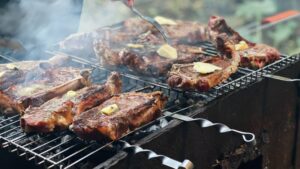
How To Enhance Your DIY Meat Probe with Voice Control Features
Every culinary enthusiast knows the importance of a perfectly cooked steak, and that’s where a meat probe comes in handy. But what if we could

If you’re new to barbecue or cooking for a small family, smoking a whole beef brisket might seem too big, costly, and possibly wasteful. A smart choice is the chuck roast, a smaller and more affordable option, yet still offering a taste close to brisket.
I’m a chef and caterer from Texas, and I’ve prepared many chuck roasts over time. In this easy-to-follow guide, I’ll share how to make your chuck roast super juicy and full of great smoky flavor, right in your backyard.
This guide will take you through perfecting smoked chuck roast, covering all the essential steps.
The initial step is understanding how long to smoke the chuck roast for each pound and the ideal temperature to keep in your smoker for a flawless cooking experience.
To smoke a Chuck Roast, set the smoker at 225° and smoke for 2 hours per pound, or at 250° for 1 ½ hours per pound. Remember, this timing doesn’t include resting the meat, which should be done for 1-2 hours for optimal taste.
The best way to ensure your roast is perfectly cooked is by focusing on the internal temperature rather than the cooking time. Aim to cook the Smoked Chuck Roast to 195 degrees and rest it for at least 1 hour. (In my detailed method for making the roast extra juicy, I recommend wrapping the meat when it reaches 170 degrees).
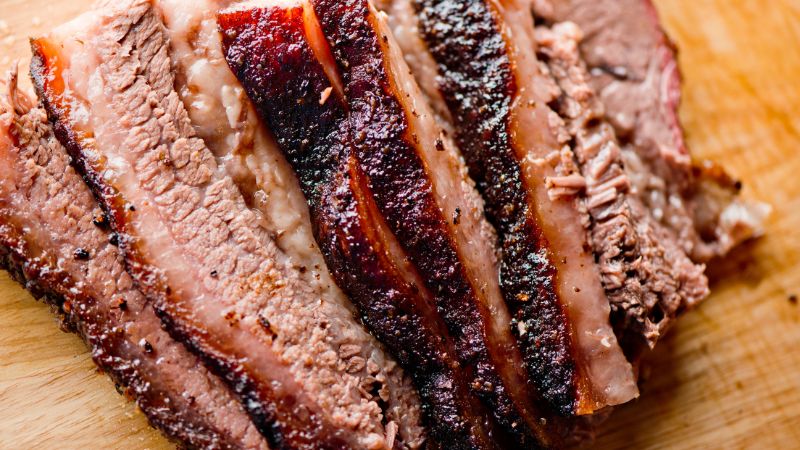
Smoke a 3-4 pound chuck roast in 6-7 hours at 225°f. Don’t forget 1 hour rest time for perfect flavor.
Changes in how long it takes to smoke a chuck roast are due to differences in your smoker’s heat and if you decide to wrap the roast (explained later in this guide). The type of result you want also plays a role in the smoking time…
To get a chuck roast that you can slice like brisket, cook it until it reaches an inside temperature of 195°. For a roast, you can pull it apart, and cook it until it’s 205°.
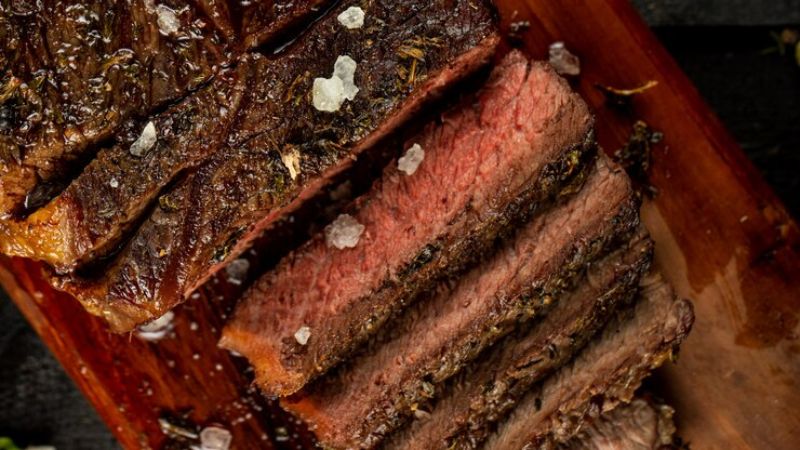
Luckily, chuck roast is an easy-to-find beef cut. It’s the same as pot roast, so it’s available at most grocery stores, your preferred butcher, or big stores like Costco and Sam’s Club.
Beef grades are, from lowest to highest – Select, Choice, and Prime.
You’ll often see Choice grade chuck roast wrapped in plastic at grocery stores. It’s the basic grade, and what most of us buy. Select or Prime is at specialty stores and Costco. Higher-grade meats are tastier and more tender, but for smoking, a Choice-grade chuck roast is just fine.
For setting up your smoker for church roast, you can use any smoker, like a pellet smoker, an offset smoker, a Big Green Egg, or whatever you have. Just ensure it gives indirect heat and a good amount of smoke. Your smoker should be clean and ready for the meat.
For offset smokers, get your fire going and keep wood ready for the wood box. Pellet smokers need a fresh load of pellets.
Heat your smoker to 225 degrees before starting.
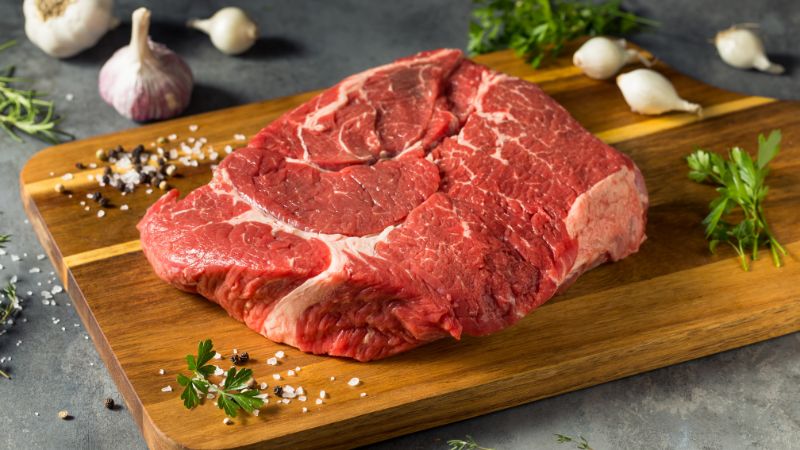
What wood is best for smoking? My recommendations: Classic woods like Oak, Pecan, Hickory, Peach, and Mesquite are great for smoking chuck roast.
We love Lumberjack Competition Blend Pellets for any beef. Bear Mountain’s traditional beef pellet blends are also a favorite. The type of wood or pellets you use, whether it’s actual wood or wood chips, depends on your taste. Try different woods and pellets to find your favorite.
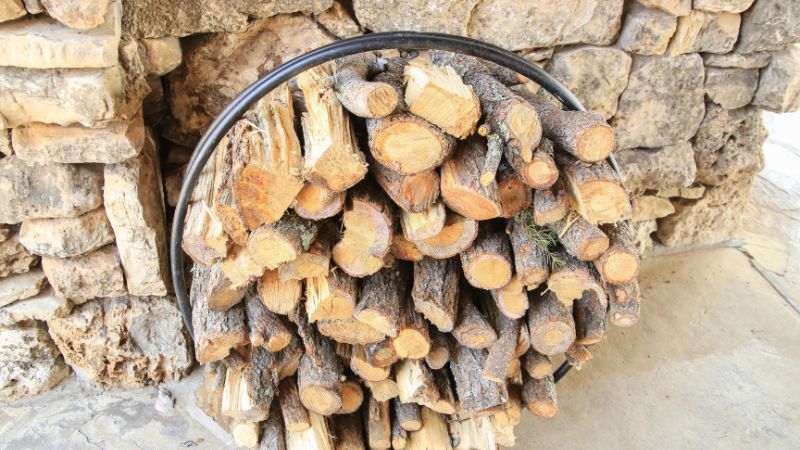
We use a water pan in our Smoker to balance the temperature inside. This helps cook the chuck roast evenly. It’s simple: just a foil pan with boiling water.
Why hot water? Good question. Hot water evaporates quickly in the smoke chamber. It starts at a higher temperature, so it doesn’t need as much time to heat up compared to cold tap water.
Start by unwrapping the vacuum-sealed chuck roast and drying it with a towel.
Avoid washing the chuck roast in the sink, as this can scatter bacteria in your kitchen. Simply pat the meat dry with a paper towel.
Smoking a chuck roast is easier than brisket because it usually needs little to no trimming.
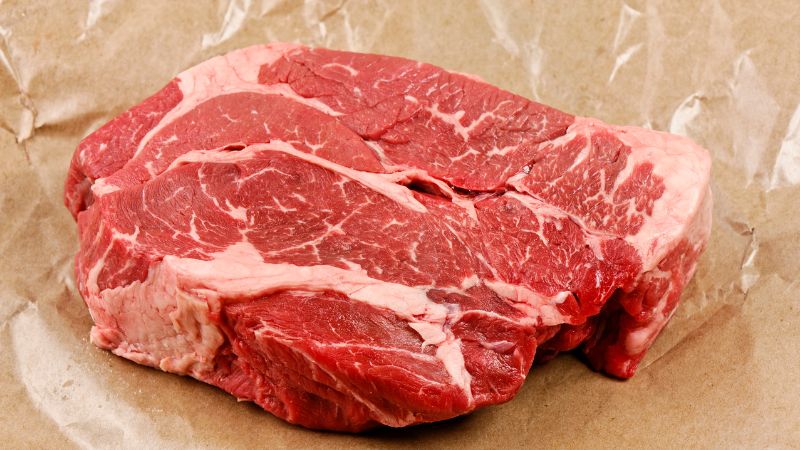
Inside the meat, there’s intramuscular fat, known as marbling. This is the beneficial fat that melts during cooking, adding juiciness and great flavor. Chuck roasts have plenty of this fat, which you don’t need to trim. The aim is to render this fat into a liquid in your final smoked roast.
Chuck roast also has intermuscular fat, which is found between muscles. This is because it consists of various muscles.
Intermuscular fat is chewy and doesn’t fully break down. It softens but stays chewy if eaten. We’ve all encountered chewy meat that exhausts our jaws, typically caused by intermuscular fat.
This fat is firm and often runs through the roast like a web. There’s no need to remove it as it keeps the roast together, and it’s easy to pull out after cooking.
In short, chuck roast usually doesn’t require the trimming needed for other meats.
Now, depending on whether you’re prepping the night before or the morning of your cookout, you have two choices: to dry brine or not.
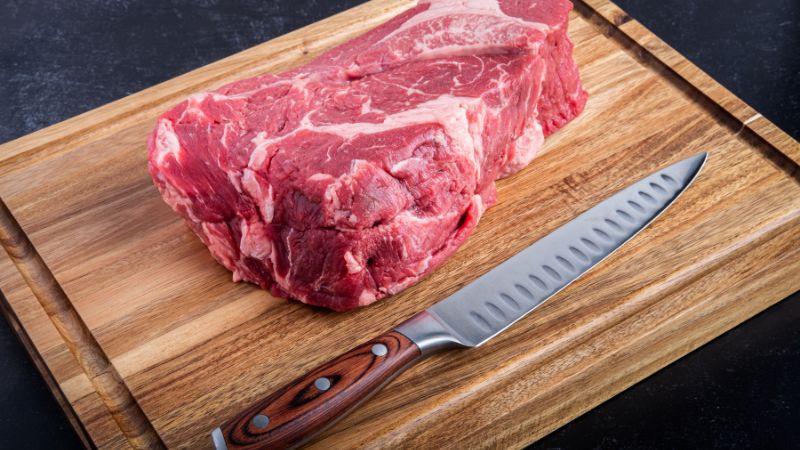
If you’re prepping your beef roast the evening before smoking, lightly salt the outside with kosher salt and let it dry brine overnight in the fridge. After salting, wrap it in saran wrap, aluminum foil, or place it in a disposable catering tin and tent with foil.
Dry brining pulls moisture from the beef and dissolves the salt. The beef then reabsorbs this salt solution, enhancing flavor and softening muscle fibers for more tenderness.
But there’s a limit to how long you should dry brine. Overnight, up to 24 hours, is ideal. Longer than that, like several days, might make the meat mushy.
If you can’t salt it the night before, no worries. We often forget or run out of time. Dry brining is just an extra step for more flavor, not a must-do.
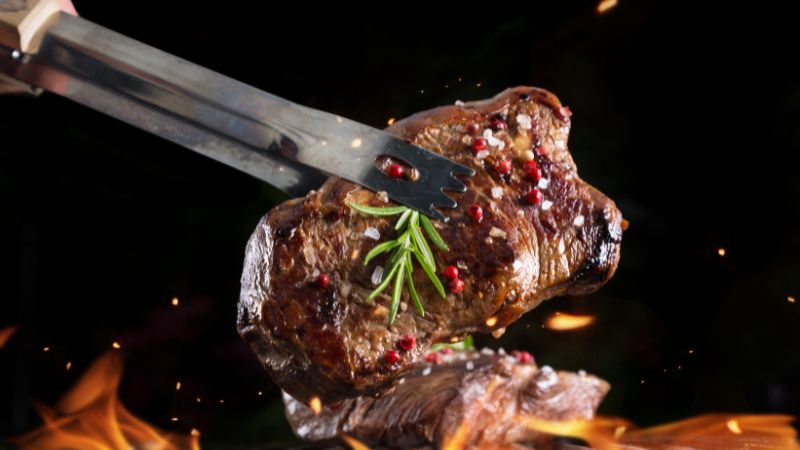
It’s time to season the meat. You can choose any rub, but we like a beef rub mainly made of kosher salt, pepper, garlic powder, and onion powder. Here’s my personal recipe for a Texas-style beef rub.
When seasoning your chuck roast, avoid covering it completely. Some recipes and YouTube videos suggest coating the meat so thickly with rub that you can hardly see it.
This approach is a mistake for two reasons: it hinders the smoke from penetrating the chuck roast and prevents the formation of a good bark.
Smoking is straightforward. After preparing your smoker and chuck roast, focus on time, temperature, and wrapping your meat.
Heat the smoker to an internal temperature of 225°-250°.
After placing the roast in the smoker, insert a temperature probe into the thickest part of the meat. For this recipe, we’re using the Meater Wireless Digital Thermometer.
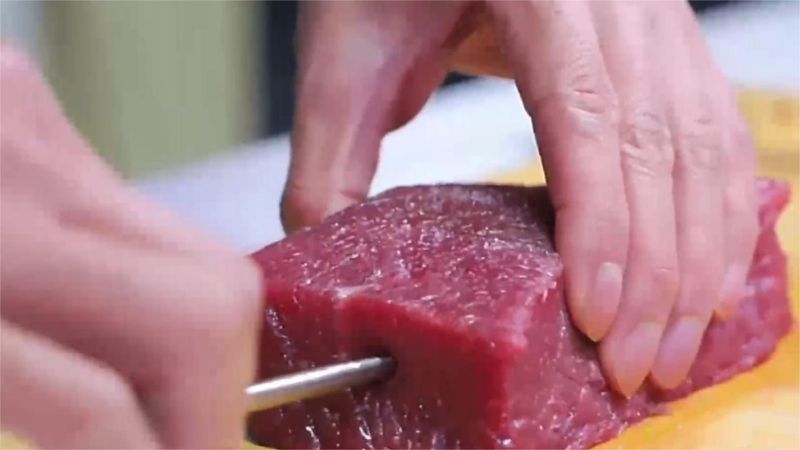
A frequent error is smoking the roast based on a set time (as suggested by cooking websites) but not monitoring the internal temperature of the meat. This oversight can result in either a perfectly smoked or a dry chuck roast.

The Meater probe thermometer lets you track the chuck roast’s temperature without opening the smoker, preserving heat and smoke. Probing ensures a stress-free cooking process and delicious results.
Regarding the smoker’s chamber temperature, you likely have a built-in thermometer. Monitoring both the chamber and meat temperatures gives you a clear picture of the cooking process without needing to open the smoker.
Many people just follow a prescribed smoking time from a recipe but overlook the meat’s internal temperature. This oversight can lead to either a perfect or a dry chuck roast.
The Meater probe thermometer helps us monitor the chuck roast’s internal temperature without opening the smoker, which would let out heat and smoke. Using a meat probe ensures a smoother cooking experience and tasty results.
Most smokers come with a thermometer for the chamber temperature. Keeping tabs on both the chamber and the meat’s temperatures lets you know precisely what’s happening inside without having to open the smoker.
You’ve probably heard the saying, ‘If you’re looking, you’re not cooking,’
Though it’s a common phrase, its message is important. Your thermometer choice is crucial to accurately monitor both the meat and the smoker’s temperature.
When it comes to the temp of the chuck roast, set the roast in the smoker at 225°-250°. Optionally, spritz the chuck roast with apple juice, apple cider vinegar, or water every 30-45 minutes.
When the internal temperature reaches 170°, as shown by your probe thermometer, it’s wrap time. By this stage, the roast will have developed a delicious bark known as “bark candy”.
This bark is what gives extraordinary flavor to the meat, which is why we don’t overuse rub. We prefer double-wrapping in pink butcher paper over aluminum foil to preserve this bark.
Pink butcher paper serves two purposes. Firstly, it locks in the juices, keeping the roast moist. Secondly, it lets some steam escape, preserving the bark’s texture.
Using aluminum foil could turn your roast into a juicy pot roast, not the smoked chuck roast you aim for. It traps all the steam, which is not ideal for this recipe.
With pink butcher paper as the wrapping choice, aim for an internal meat temperature of 195°, while keeping the smoker at 225°.
Various recipes suggest bringing the chuck roast’s temperature to 190°, 203°, or even 205°. However, carryover heat can push the temperature of meat taken to 203° or 205° even higher, risking dryness.
Aiming for 195° allows carryover heat to gently reach around 203°, which is the ideal balance of tenderness and doneness. It’s advisable to experiment with your smoker to discover the best temperature for your equipment.
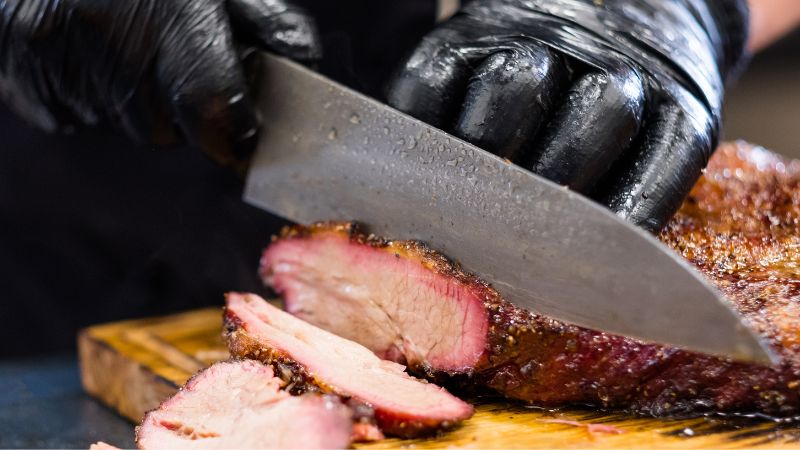
So, your chuck roast is now around 195° internally and smells amazing. Time for it to rest.
We turn our pellet smoker down to 180°, but really, you don’t even need the smoker at this stage!
Yes, you heard right, no more smokers are needed. You can finish this part in an oven because the smoke has already flavored the meat.
Keep the meat wrapped with the probe in, and let it rest in your oven or smoker at 180°.
This step lets the fat and connective tissues inside the meat keep melting while it rests, which should be for 1-2 hours.
Or, you can put the wrapped roast in a cooler with paper towels for 1-3 hours. This also lets the meat rest and the fat inside continue to melt.
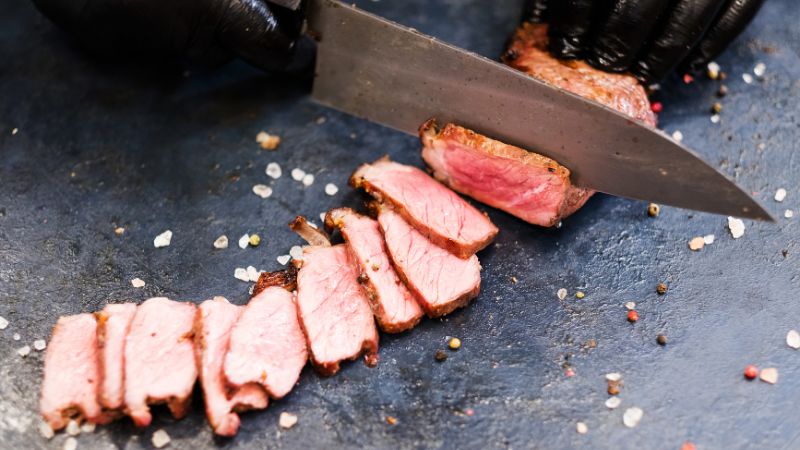
Preparation: Before you start slicing your smoked chuck roast, it’s important to let it rest. This allows the juices to redistribute throughout the meat, ensuring it remains moist and flavorful. A rest period of 15 to 20 minutes is generally recommended.
Slicing technique: Use a sharp carving knife to make precise cuts. For smoked chuck roast, the ideal thickness of each slice is about 1/4 inch. It’s important to slice against the grain. This means cutting perpendicular to the muscle fibers in the meat, which makes the slices more tender and easier to chew.
Presentation: Arrange the slices neatly on a platter. You can garnish with fresh herbs like rosemary or thyme for an appealing presentation.
1. Coleslaw: A classic choice, coleslaw provides a crisp, refreshing contrast to the rich flavors of smoked meats. Its tangy and slightly sweet profile complements the savory taste of the meat.
2. Grilled vegetables: Vegetables like asparagus, bell peppers, and zucchini grilled with a touch of olive oil and seasoning can add a healthy and colorful side to your smoked meats.
3. Baked beans: Smoky and hearty, baked beans are a traditional side that pairs wonderfully with smoked meats. They offer a nice balance of sweetness and savory flavors.
4. Cornbread: A slice of moist cornbread can be the perfect accompaniment to smoked meats. Its mild sweetness and soft texture provide a comforting balance.
5. Potato salad: Creamy and filling, potato salad is a versatile side dish that goes well with almost any smoked meat. You can opt for a traditional recipe or spice it up with additional herbs and ingredients like bacon or green onions.
6. Macaroni and cheese: For a more indulgent side, creamy macaroni and cheese can be a hit. It’s a comforting dish that complements the smokiness of the meat.
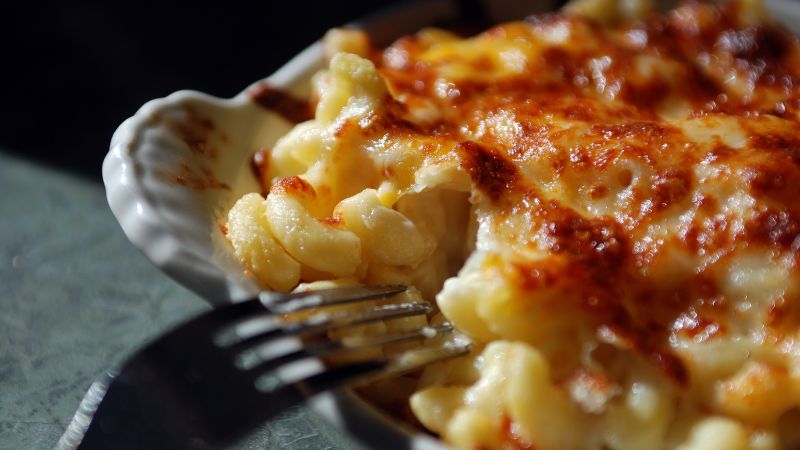
7. Garden salad: A simple garden salad with a light vinaigrette can offer a fresh and light option, balancing the heaviness of smoked meats.
Remember, the key to pairing side dishes with smoked meats is balancing flavors and textures. Choose sides that complement and contrast the rich, smoky flavor of the meat for a well-rounded meal.
Smoking a chuck roast is an art that turns a simple cut of beef into a succulent, flavorful masterpiece. Here are some frequently asked questions to guide you through the process of smoking a chuck roast to perfection.
Q1: What temperature should I smoke my chuck roast?
A: For optimal flavor and tenderness, smoke your chuck roast at a low and steady temperature of 225°F to 250°F.
Q2: Should I wrap my chuck roast while smoking?
A: Wrapping the chuck roast in foil or butcher paper after the first few hours of smoking can help retain moisture and speed up the cooking process.
Q3: What internal temperature should I aim for?
A: For a tender and juicy chuck roast, aim for an internal temperature of around 190°F to 200°F.


Every culinary enthusiast knows the importance of a perfectly cooked steak, and that’s where a meat probe comes in handy. But what if we could

When it comes to cooking perfection, a meat probe is an indispensable tool for any chef or home cook. But in the world of meat
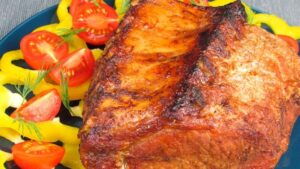
The moment you bring a meat probe into your kitchen, it’s not just about cooking anymore; it’s about precision, about transforming an ordinary meal into

Ever questioned if a meat probe could be your secret weapon for the perfect roast chicken? It’s a culinary showdown: the precision of a meat
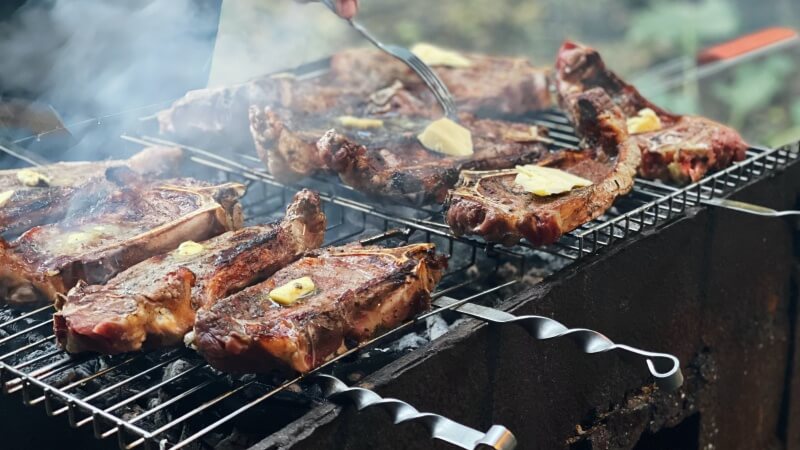
Every culinary enthusiast knows the importance of a perfectly cooked steak, and that’s where a meat probe comes in handy. But what if we could

When it comes to cooking perfection, a meat probe is an indispensable tool for any chef or home cook. But in the world of meat
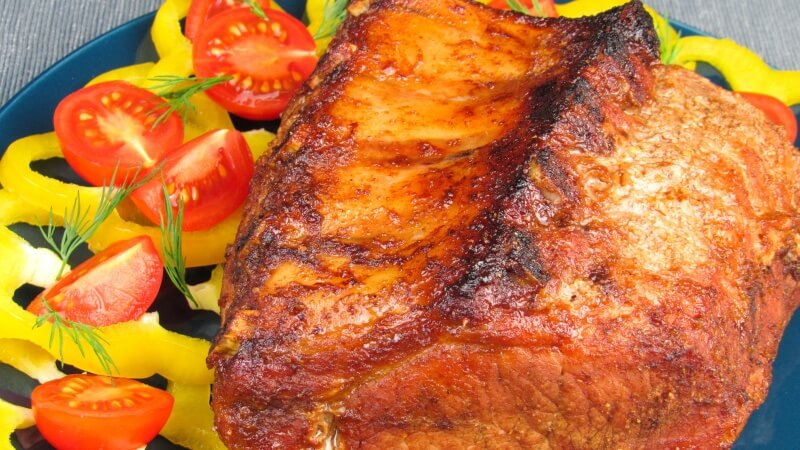
The moment you bring a meat probe into your kitchen, it’s not just about cooking anymore; it’s about precision, about transforming an ordinary meal into

Ever questioned if a meat probe could be your secret weapon for the perfect roast chicken? It’s a culinary showdown: the precision of a meat
Copyright © 2024 meaterprobe. All Rights Reserved.